Do you have a question about the Innova IGZF09NO-1 and is the answer not in the manual?
Details about the refrigerant used in the air conditioner unit.
Important safety precautions for operating and maintaining the unit.
Identifies the different parts of the indoor unit.
Explanation of hazard symbols indicating severity of potential dangers.
Meaning of the notice symbol for important non-hazard-related information.
Situations where the manufacturer is not responsible for damages or injuries.
Information on R32 refrigerant, its flammability, environmental impact, and handling warnings.
Safety guidelines for operating, cleaning, and maintaining the air conditioner.
Electrical safety, power supply, and circuit breaker requirements for installation.
Detailed requirements for proper grounding and electrical wiring connections.
Guidelines for choosing a safe and suitable location for unit installation.
Specifies the acceptable operating temperature ranges for cooling and heating.
Diagram and labels for the main parts of the indoor unit.
Visual representation of the remote control unit.
Labels and numbering for all buttons on the remote control.
Explanation of the various icons displayed on the remote control screen.
How to use the ON/OFF and FAN buttons, including X-FAN function.
Using MODE, +/-, and TURBO buttons for operation and comfort settings.
Operating the swing buttons to adjust the direction of airflow.
How to set the clock and program ON/OFF timers for the unit.
Using the TEMP button to view different temperature readings.
Operating the I FEEL, LIGHT, WiFi, and QUIET functions for enhanced control.
Detailed explanation of Sleep modes 1 and 2 for cooling and heating comfort.
Instructions for users to create their own personalized sleep temperature curves.
Understanding AUTO RUN for automatic adjustment and Turbo for rapid operation.
How to lock the remote and control the swing of air louvers.
Switching between C/F and activating energy-saving mode.
Details on Quiet mode operation and its integration with Sleep functions.
How to perform basic and optional operations using the remote control.
Step-by-step guide for replacing batteries in the remote control unit.
Important usage tips and notices for the remote controller.
How to operate the unit manually using the auxiliary button when the remote is unavailable.
Essential safety warnings before commencing any cleaning of the unit.
Instructions for cleaning the exterior surface of the indoor unit with a cloth.
Detailed steps for removing, cleaning, and reinstalling the air filter.
Important advice on filter cleaning frequency and avoiding damage.
Essential checks before and after the operational season for unit maintenance.
Guidance on responsible disposal and recycling of the air conditioner.
Solutions for problems like no signal, fuzzy display, or unresponsive remote.
Diagnosing and resolving issues where the indoor unit does not blow air.
Steps to take if the air conditioner unit cannot be turned on or operated.
Explaining mist formation and resolving temperature adjustment problems.
Identifying causes and solutions for reduced cooling or heating efficiency.
Addressing odours and general abnormal operation, including noises.
List of error codes displayed by the unit and corresponding troubleshooting guidance.
Urgent warnings for serious malfunctions requiring immediate attention from qualified professionals.
Requirements for personnel performing installation and maintenance on the unit.
Guidelines for safe installation locations and ensuring proper ventilation in maintenance areas.
Procedures and safety considerations for welding refrigerant pipes.
Steps for safe refrigerant elimination, vacuuming, filling, and leak detection.
Safety instructions for moving and storing the air conditioner unit.
Diagram illustrating required space around the indoor unit for proper installation.
Ensuring the refrigerant circuit is free from contaminants during installation and relocation.
Safe methods for recovering refrigerant when moving or servicing the unit.
Guidelines for safe electrical connections, avoiding extension cords and ensuring proper wiring.
A comprehensive list of tools necessary for installing the air conditioner.
Basic criteria for choosing a suitable and safe location for the unit.
Specific recommendations for the placement of the indoor unit.
Adhering to local safety regulations for power supply and wiring.
Ensuring correct electrical connections, including grounding, for safe operation.
Recommending and finalizing the installation site with the client.
Steps for correctly installing the wall-mounting frame for the indoor unit.
Drilling and preparing the wall opening for the refrigerant and drain pipes.
Guiding and cutting pathways for the pipes exiting the indoor unit.
Making secure connections between the indoor unit and refrigerant pipes using correct torque.
Connecting the drain hose to the indoor unit for condensate removal.
Connecting the power and control wires to the indoor unit's terminal block.
Securing and organizing the refrigerant pipes, power cord, and drain hose.
Mounting the indoor unit onto the previously installed wall bracket.
Selecting a location and fixing the support structure for the outdoor unit.
Connecting the drain joint and hose to the outdoor unit's drainage system.
Placing and securely bolting the outdoor unit onto its support base.
Connecting refrigerant pipes between the indoor and outdoor units, ensuring proper torque.
Connecting power and control wiring to the outdoor unit's terminal block.
Properly routing and securing the pipes along the wall, including U-shaped bends.
A comprehensive list of items to verify after the unit installation is complete.
Ensuring the unit is ready for initial testing and client approval.
Steps to run the unit and verify its basic functions after installation.
Guidelines on permissible lengths for refrigerant connection pipes.
Method for determining and adding refrigerant when using extended pipes.
Table specifying recommended refrigerant amounts for different pipe sizes and lengths.
Detailed steps for expanding pipe ends to ensure proper sealing and prevent leaks.
Specifications for expanded pipe port dimensions and quality checks.
Details about the refrigerant used in the air conditioner unit.
Important safety precautions for operating and maintaining the unit.
Identifies the different parts of the indoor unit.
Explanation of hazard symbols indicating severity of potential dangers.
Meaning of the notice symbol for important non-hazard-related information.
Situations where the manufacturer is not responsible for damages or injuries.
Information on R32 refrigerant, its flammability, environmental impact, and handling warnings.
Safety guidelines for operating, cleaning, and maintaining the air conditioner.
Electrical safety, power supply, and circuit breaker requirements for installation.
Detailed requirements for proper grounding and electrical wiring connections.
Guidelines for choosing a safe and suitable location for unit installation.
Specifies the acceptable operating temperature ranges for cooling and heating.
Diagram and labels for the main parts of the indoor unit.
Visual representation of the remote control unit.
Labels and numbering for all buttons on the remote control.
Explanation of the various icons displayed on the remote control screen.
How to use the ON/OFF and FAN buttons, including X-FAN function.
Using MODE, +/-, and TURBO buttons for operation and comfort settings.
Operating the swing buttons to adjust the direction of airflow.
How to set the clock and program ON/OFF timers for the unit.
Using the TEMP button to view different temperature readings.
Operating the I FEEL, LIGHT, WiFi, and QUIET functions for enhanced control.
Detailed explanation of Sleep modes 1 and 2 for cooling and heating comfort.
Instructions for users to create their own personalized sleep temperature curves.
Understanding AUTO RUN for automatic adjustment and Turbo for rapid operation.
How to lock the remote and control the swing of air louvers.
Switching between C/F and activating energy-saving mode.
Details on Quiet mode operation and its integration with Sleep functions.
How to perform basic and optional operations using the remote control.
Step-by-step guide for replacing batteries in the remote control unit.
Important usage tips and notices for the remote controller.
How to operate the unit manually using the auxiliary button when the remote is unavailable.
Essential safety warnings before commencing any cleaning of the unit.
Instructions for cleaning the exterior surface of the indoor unit with a cloth.
Detailed steps for removing, cleaning, and reinstalling the air filter.
Important advice on filter cleaning frequency and avoiding damage.
Essential checks before and after the operational season for unit maintenance.
Guidance on responsible disposal and recycling of the air conditioner.
Solutions for problems like no signal, fuzzy display, or unresponsive remote.
Diagnosing and resolving issues where the indoor unit does not blow air.
Steps to take if the air conditioner unit cannot be turned on or operated.
Explaining mist formation and resolving temperature adjustment problems.
Identifying causes and solutions for reduced cooling or heating efficiency.
Addressing odours and general abnormal operation, including noises.
List of error codes displayed by the unit and corresponding troubleshooting guidance.
Urgent warnings for serious malfunctions requiring immediate attention from qualified professionals.
Requirements for personnel performing installation and maintenance on the unit.
Guidelines for safe installation locations and ensuring proper ventilation in maintenance areas.
Procedures and safety considerations for welding refrigerant pipes.
Steps for safe refrigerant elimination, vacuuming, filling, and leak detection.
Safety instructions for moving and storing the air conditioner unit.
Diagram illustrating required space around the indoor unit for proper installation.
Ensuring the refrigerant circuit is free from contaminants during installation and relocation.
Safe methods for recovering refrigerant when moving or servicing the unit.
Guidelines for safe electrical connections, avoiding extension cords and ensuring proper wiring.
A comprehensive list of tools necessary for installing the air conditioner.
Basic criteria for choosing a suitable and safe location for the unit.
Specific recommendations for the placement of the indoor unit.
Adhering to local safety regulations for power supply and wiring.
Ensuring correct electrical connections, including grounding, for safe operation.
Recommending and finalizing the installation site with the client.
Steps for correctly installing the wall-mounting frame for the indoor unit.
Drilling and preparing the wall opening for the refrigerant and drain pipes.
Guiding and cutting pathways for the pipes exiting the indoor unit.
Making secure connections between the indoor unit and refrigerant pipes using correct torque.
Connecting the drain hose to the indoor unit for condensate removal.
Connecting the power and control wires to the indoor unit's terminal block.
Securing and organizing the refrigerant pipes, power cord, and drain hose.
Mounting the indoor unit onto the previously installed wall bracket.
Selecting a location and fixing the support structure for the outdoor unit.
Connecting the drain joint and hose to the outdoor unit's drainage system.
Placing and securely bolting the outdoor unit onto its support base.
Connecting refrigerant pipes between the indoor and outdoor units, ensuring proper torque.
Connecting power and control wiring to the outdoor unit's terminal block.
Properly routing and securing the pipes along the wall, including U-shaped bends.
A comprehensive list of items to verify after the unit installation is complete.
Ensuring the unit is ready for initial testing and client approval.
Steps to run the unit and verify its basic functions after installation.
Guidelines on permissible lengths for refrigerant connection pipes.
Method for determining and adding refrigerant when using extended pipes.
Table specifying recommended refrigerant amounts for different pipe sizes and lengths.
Detailed steps for expanding pipe ends to ensure proper sealing and prevent leaks.
Specifications for expanded pipe port dimensions and quality checks.
| Brand | Innova |
|---|---|
| Model | IGZF09NO-1 |
| Category | Air Conditioner |
| Language | English |

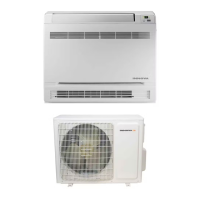




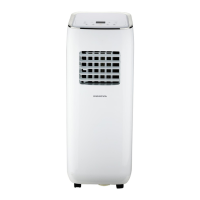
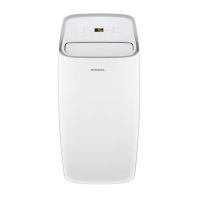

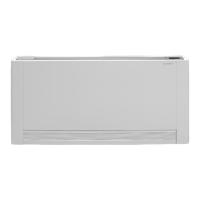

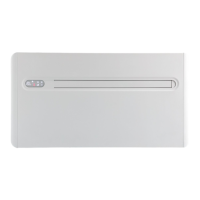
